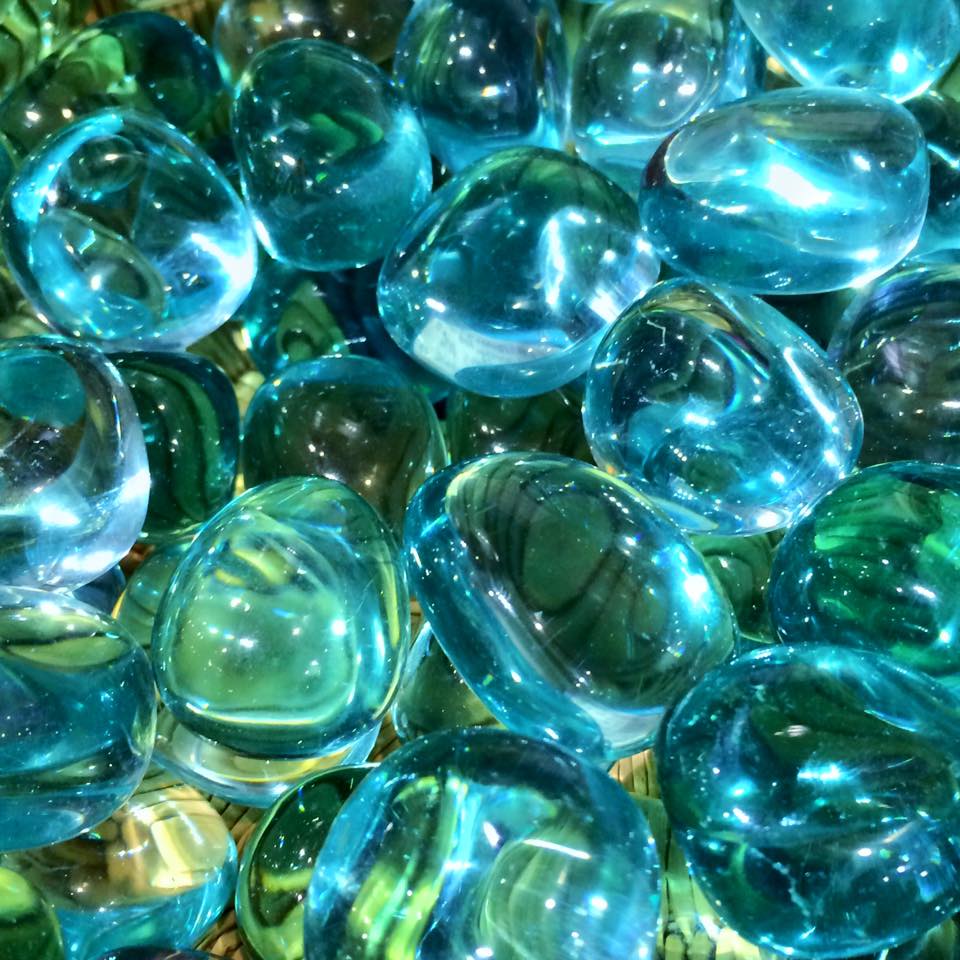


This Rainbow Obsidian listed below was found in the Warner Mountains of northeastern California without the use of any motorized equipment prior to the new restrictions being in effect. states of Virginia, as well as Pennsylvania and North Carolina.

Obsidian can also be found in the eastern U.S. states including Arizona, Colorado, New Mexico, Texas, Utah, Washington, Oregon and Idaho. Yellowstone National Park has a mountainside containing obsidian located between Mammoth Hot Springs and the Norris Geyser Basin, and deposits can be found in many other western U.S. Obsidian flows which may be hiked on are found within the calderas of Newberry Volcano and Medicine Lake Volcano in the Cascade Range of western North America, and at Inyo Craters east of the Sierra Nevada in California. It can be found in Argentina, Armenia, Azerbaijan, Australia, Canada, Chile, Georgia, Greece, El Salvador, Guatemala, Iceland, Italy, Japan, Kenya, Mexico, New Zealand, Papua New Guinea, Peru, Scotland, Turkey and the United States. Obsidian can be found in locations which have experienced rhyolitic eruptions.

Quality Rainbow Obsidian is in high demand for making jewelery and artistic carvings and displays. Obsidian, unlike crystals, has no regular structure and therefore fractures in smooth conchoidal (curved) shapes. Obsidian is relatively soft with a typical hardness rating of 5 to 5.5. The crystals that develop through devitrification cause obsidian to lose its conchoidal fracture and glassy texture.” The "snowflakes" in snowflake obsidian are quartz crystals that have formed through devitrification of the original obsidian. Over a long period of time, obsidian gradually changes from glass to rock in a process known as "devitrification." In this process, the silica molecules within the glass slowly rearrange into organized crystal patterns. It is rare to find obsidian older than about 20 million years, which is very youthful in comparison to most continental rocks that form the Earth's crust. Obsidian is relatively unstable from a geologic perspective. The bubbles can be seen readily with a strong magnifying glass or a microscope. Some of these bubbles are visible to the naked eye. Tiny gas bubbles that have been stretched nearly flat along the flow layers in obsidian generally cause the reflectance of gold sheen and silver sheen obsidian. Very small inclusions of water vapor in the form of bubbles often are trapped in the glass. The reflectance of rainbow obsidian is likely attributed to a preferred orientation of microscopic crystals of feldspar or mica oriented along flow layers.Ī certain amount of water always is present in obsidian. Microscopic crystals of various types of feldspars may yield the unique blue, green, purple or bronze colors associated with rainbow obsidian. Abundant, microscopic crystals of minerals like magnetite, hornblende, pyroxene, plagioclase and biotite, combined with tiny fragments of rock, likely produce the jet-black varieties of obsidian. Red or brown obsidian generally results from tiny crystals or inclusions of hematite or limonite (iron oxide). Clear varieties of obsidian contain very few opaque impurities or microscopic mineral crystals. “The various colors of obsidian are a result of several factors.


 0 kommentar(er)
0 kommentar(er)
